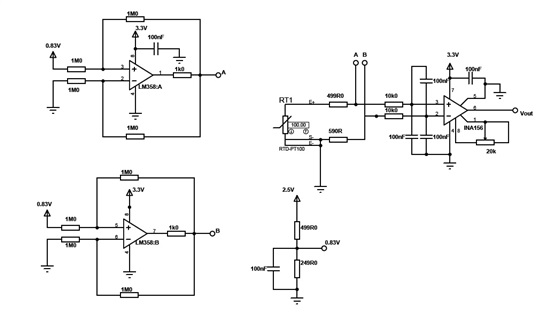Hello,
I'm using an instrumentation amplifier INA 156 in a circuit that will read 3-wire PT100 signs. Thus, the inverting input has a constant voltage level, while the non-inverting input has a voltage level close to the inverting input when the resistance of the PT100 equal to 100 ohms.
The problem I'm finding is the gain variation of the INA156, the gain decreases when the differential input voltage decreases. The Supply voltage is +3.3 V and ground. Ref pin is connected to ground. Gain pot is 20k.
The common-mode input voltage is 490mV, out of range [(V+) - 1.8 , (V+) - 0.8].
What would be a solution to this problem?
Regards


